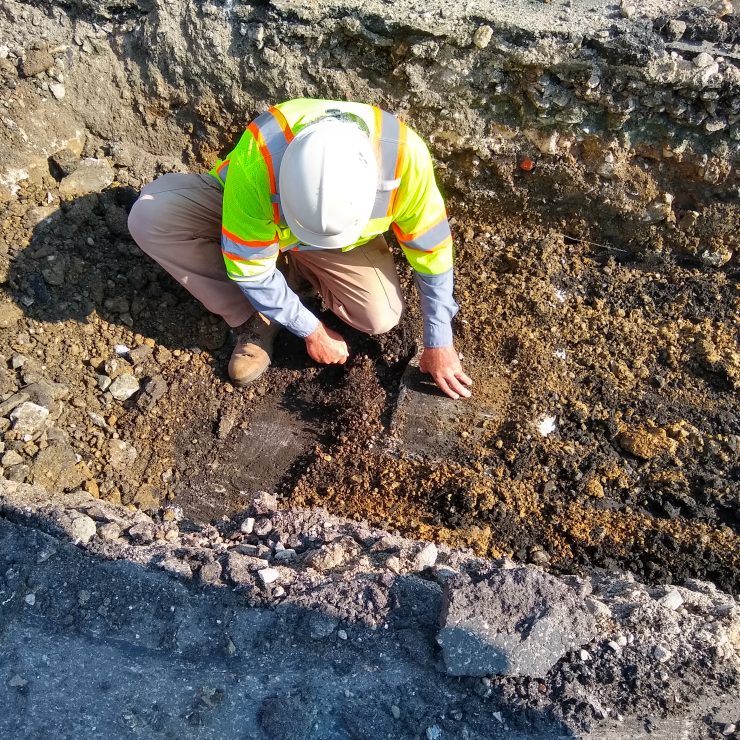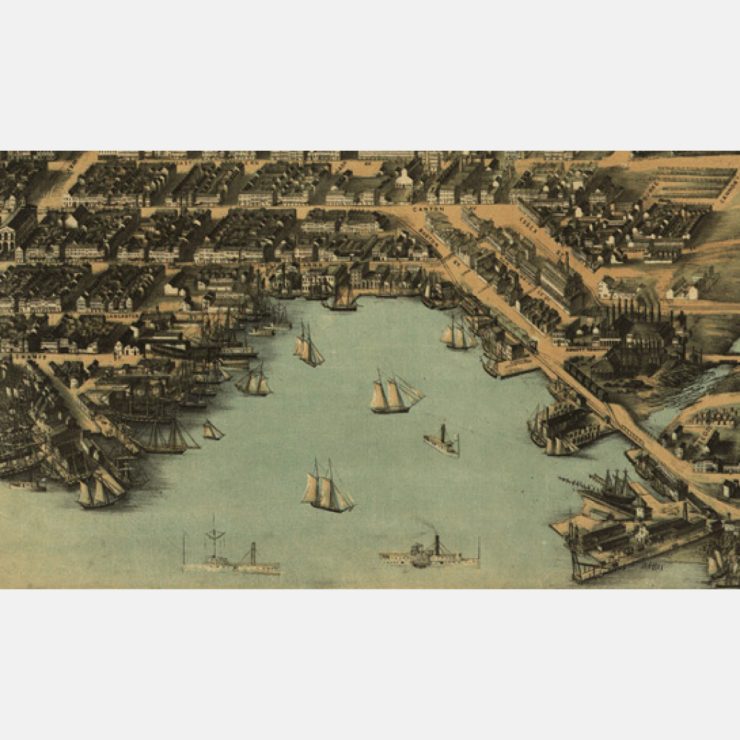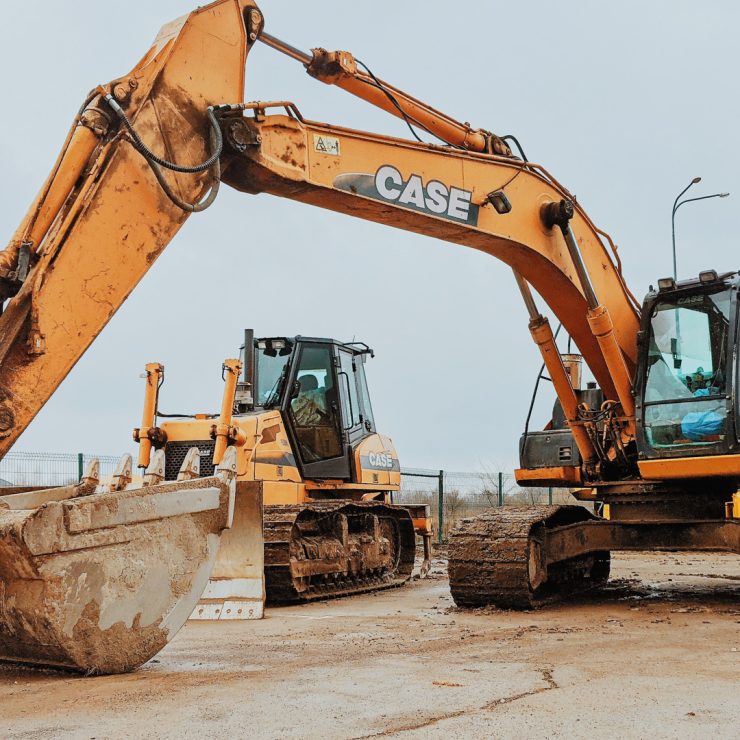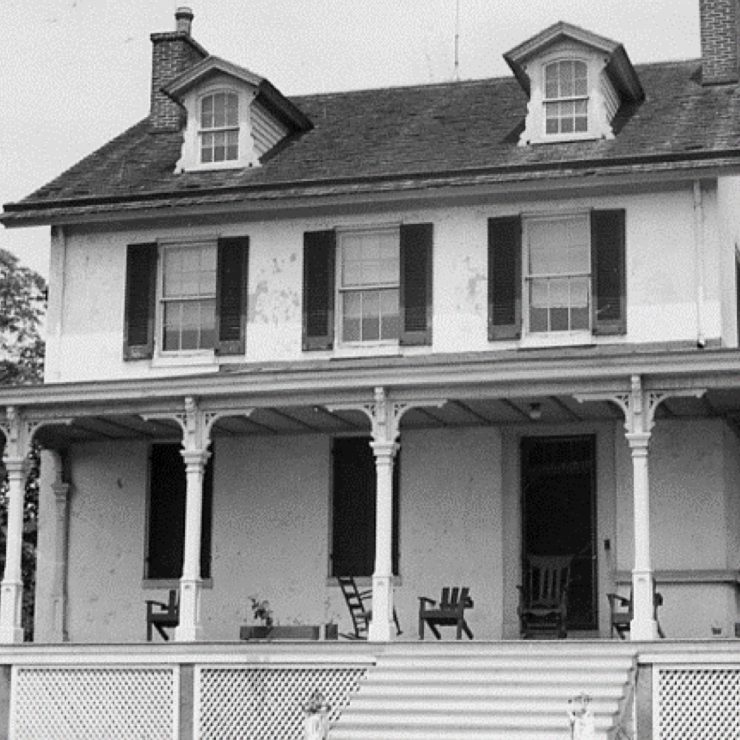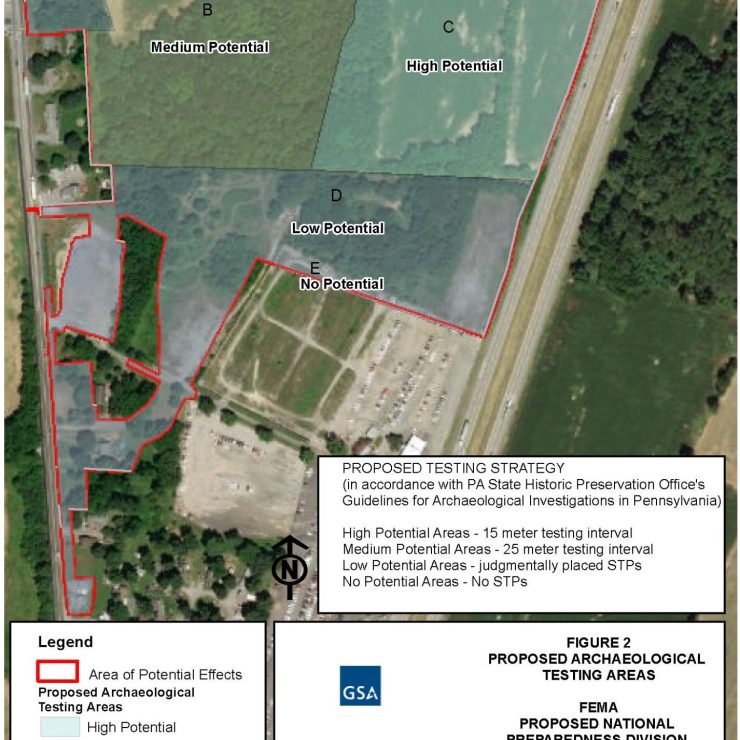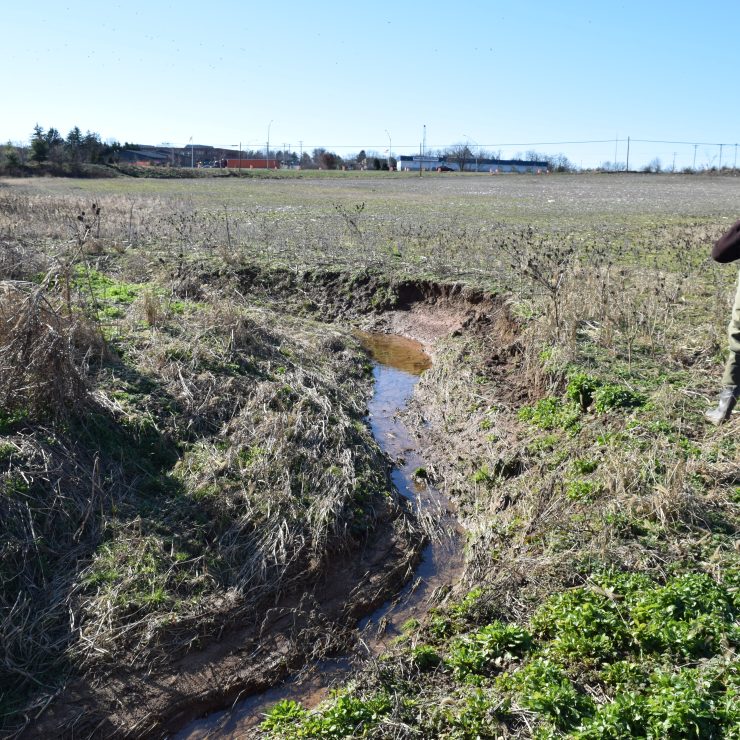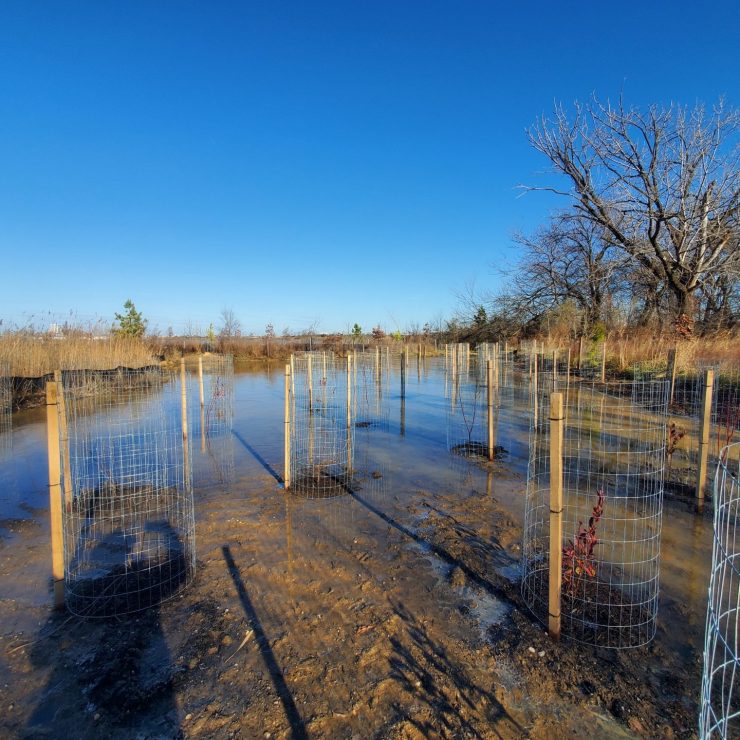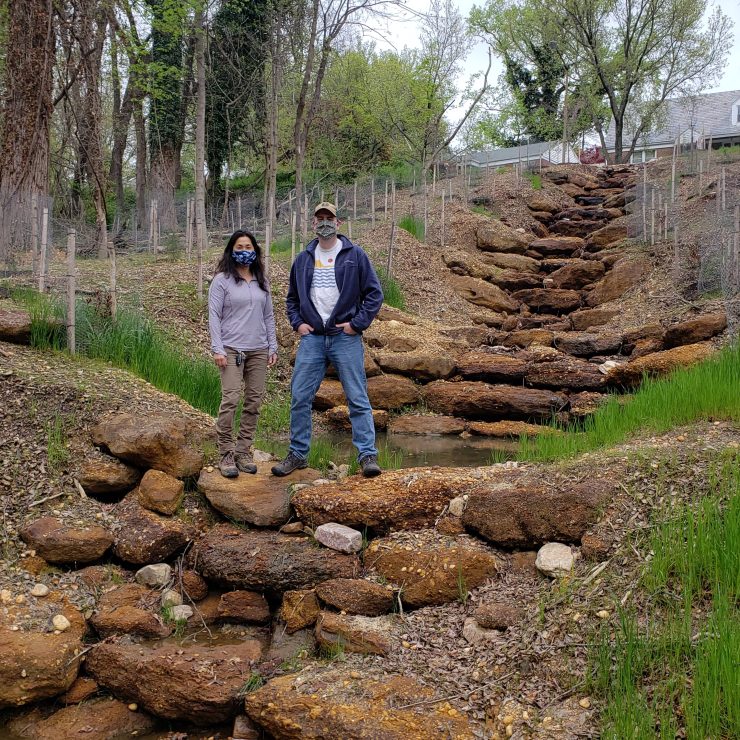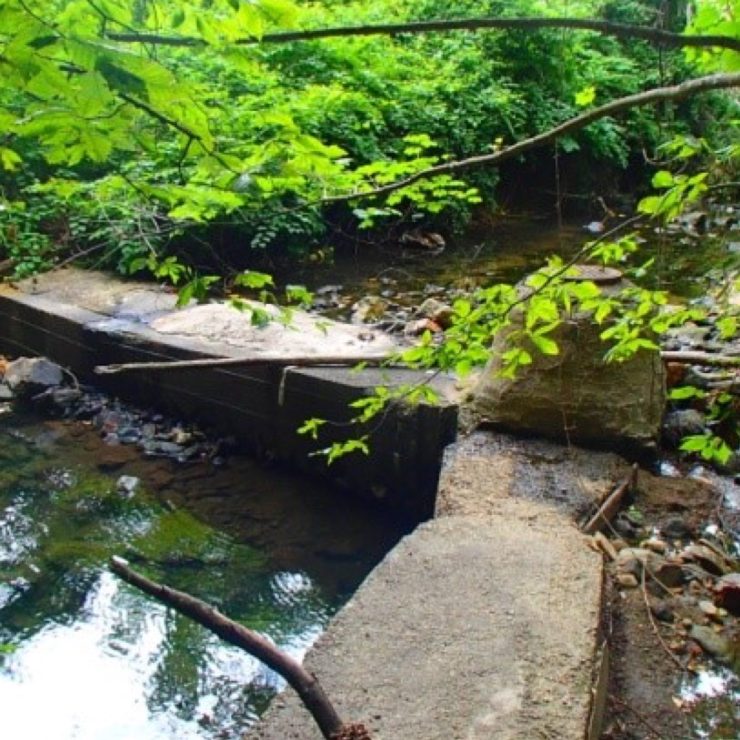Our Approach
The project consists of a five-story mixed-use, multi-family apartment building with an above grade two level parking garage. The Phase IA archeological investigation focused on archival research of the study area, within the parking lot of the Chester Cove Marina. Archival research included examination of primary and secondary documents related to the settlement and development of the study area just east of Fells Point. Eighteenth and nineteenth century survey documents available at the Maryland State Archives documented the filling of the Northwest Branch of the Patapsco and subsequent construction of wharves and shipyards as the study area developed. Insurance maps prepared by the Sanborn-Perris Map Company, aerial photography, and land records research documented the rise of the canning industry along the Baltimore waterfront.
This was a complex project that required an unconventional survey approach (mechanical trenching) and had a very tight deadline for completion. Straughan ensured that the study was completed to allow the developer to meet the Baltimore Commission for Historical and Architectural Preservation (CHAP) public hearing deadline. Straughan also prepared a fieldwork plan in coordination with Baltimore CHAP, based on the results of archival research and geotechnical investigations completed for the project. The fieldwork plan, which focused on areas with the highest potential to contain archaeological resources, resulted in excavation of a trench where remnants of a nineteenth century wharf were most likely to be found. During the COVID-19 crisis, Straughan was able to mobilize fieldwork quickly and coordinate fieldwork with the onsite construction crew, and safely conduct the Phase IB field investigation. Straughan did not find any recordable resources during our investigation and the developer was able to continue with site development.
